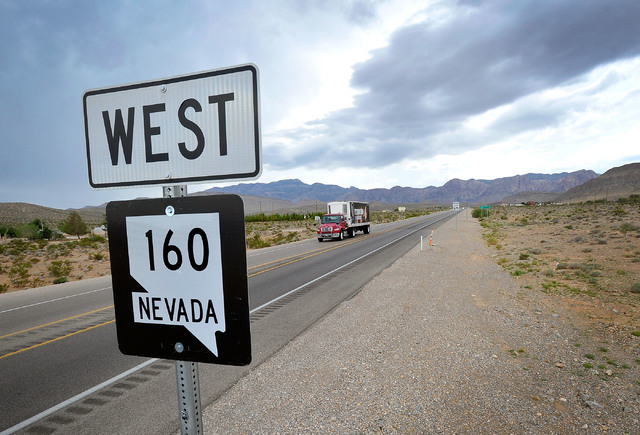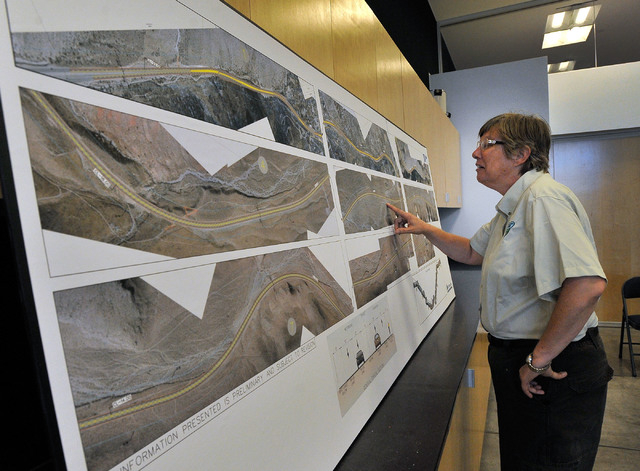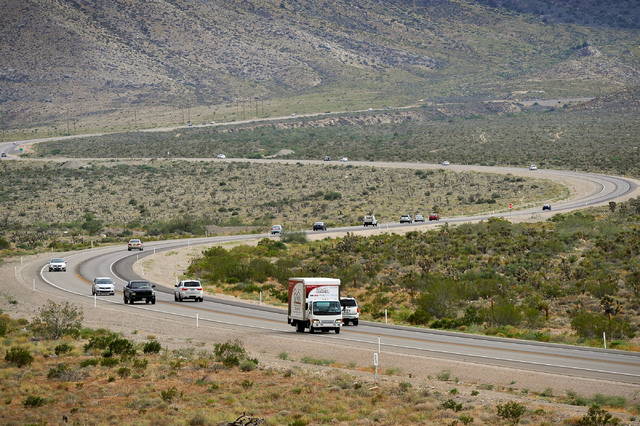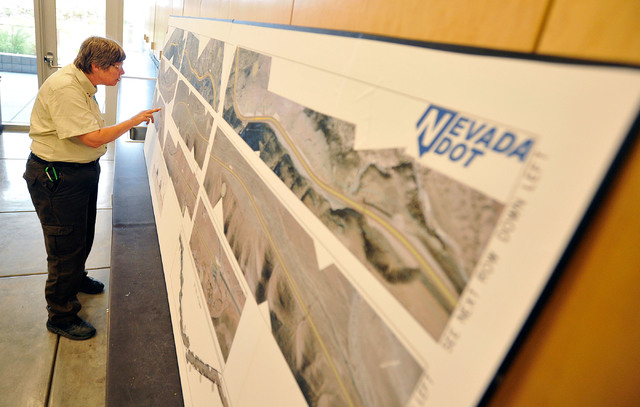Nevada pursues Route 160 widening project






State highway officials hope the era of car crashes, injury accidents, road rage and misery on the road to Pahrump is nearing an end.
The Nevada Transportation Department is getting closer to starting a project that should make state Route 160, the scene of 143 car accidents in three years, a safer road.
The highway that goes over the hump to Pahrump can be treacherous, with unexpected snowstorms and a two-lane roadway that entices the impatient motorist to chance unsafe passing when trailing a slowpoke.
The misery of a Route 160 road closure is an alternative route through Indian Springs that often takes more time than the wait for the highway to reopen.
But the Transportation Department is weeks away from wrapping up the first phase of an 11-mile stretch of highway that is unexpectedly treacherous.
Department representatives told about 25 people attending a public meeting at the Red Rock Canyon National Conservation Area Visitor Center on Tuesday that they expect to receive a notice of decision from the Federal Highway Administration by the end of September. That document would enable the department to complete the design of the widening of the lower half of the 11 miles between Nevada Highway 159 and Mountain Springs, a small community at the summit of the pass through the Spring Mountains.
The design of the first phase of the project, already about 60 percent completed, is expected to be finished in early 2015 and construction would begin by spring.
Under the department’s timetable, the design of the second phase of the project — the 5½ miles just east of Mountain Springs — would begin in 2017 with construction occurring in 2018.
The department plans to widen the highway to two 12-foot lanes in each direction with 8-foot shoulders that would double as bicycle lanes on each side of the highway and a 14-foot-wide median that in some places would double as a turn lane.
Existing water culverts also will be widened.
Jim Caviola of CA Group, the consultant project manager, said improving safety is the key reason for the project.
Between June 2010 and June 2013, there have been 143 crashes, four fatalities and 102 injuries on the 11-mile stretch.
While some of the accidents were the result of inclement weather — the pass ices up when snowstorms blanket the Spring Mountains — others were the result of drivers attempting unsafe passing maneuvers around slower motorists.
He said the project also would address roadway deficiencies and accommodate increased traffic demands.
Caviola said he doesn’t expect the improvements to the highway to spur new growth along the route, in Pahrump or in southwestern Las Vegas.
“They’re going to grow at their own rate regardless of what we do here,” Caviola said.
Part of the reason is that much of the nearby land is held by the Bureau of Land Management and the U.S. Forest Service, which are serving as cooperating agencies on the highway project.
The cost of improvements is estimated at between $60 million and $70 million. Engineers expect the second phase of the project to be more expensive than the first because the department is proposing that some of the medians on the second phase have raised surfaces.
At some intersections, the department will design so-called “High T” intersections that have left-turn channels for traffic turning off the highway onto a street and channeled acceleration lanes for vehicles turning left from the street onto the highway.
The second phase also could be more expensive as a result of rising costs of construction since estimates have been based on current dollars and work might not begin for three to four years.
Caviola said the department also is considering landscape aesthetics themed around the route being part of the Old Spanish Trail, a trade route identified by John C. Fremont and used by explorers, trappers and traders from the Rocky Mountains to California. Prospective designs include historic wood and wire fencing, waymaking rock cairns or imagery using steel silhouettes.
Caviola said that during construction, the highway would remain open in both directions, but there would be lane and speed restrictions that would slow the commute between Las Vegas and Pahrump when work is underway.
The biggest unaddressed concern raised at Tuesday’s meeting involved wildlife concerns. Some residents of the area have advocated building animal-use overpasses in areas of high wildlife migration patterns.
The department has tried to minimize wildlife conflicts by building fences. But migrating elk near the summit aren’t deterred.
Another animal problem is the presence of wild burros and horses, some of which are drawn to the roads by people who stop to feed them.
Caviola said some of that problem has been minimized by signage warning of $500 fines for feeding burros and horses.
“Not everybody is going to get what they want,” Caviola told the group, “but it will be better than what it is today.”
Contact Richard N. Velotta at rvelotta@reviewjournal.com or 702-477-3893. Find him on Twitter: @RickVelotta.












